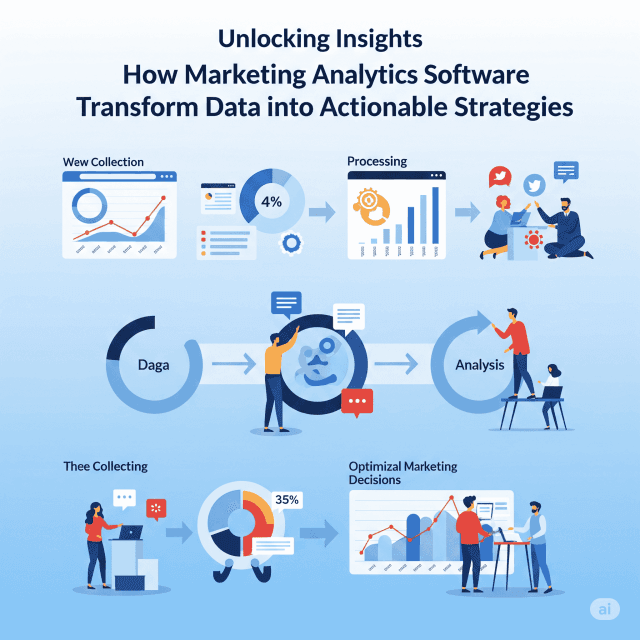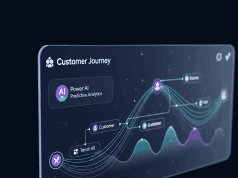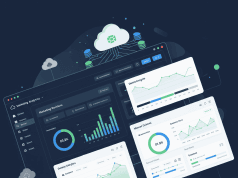In a world awash with data, businesses are tasked with a daunting challenge: how to sift through vast amounts of information to derive meaningful insights that drive marketing strategies. Marketing analytics software stands at the forefront of this transformation, enabling organizations to turn raw data into actionable strategies that enhance decision-making and improve outcomes.
The Data Explosion
Today, data generation is at an all-time high, driven by the rise of digital marketing channels, social media, and user-generated content. According to estimates, humans generate over 2.5 quintillion bytes of data every day. While this offers a wealth of opportunities, it also presents a challenge—how to make sense of this data and leverage it for strategic advantage.
The Role of Marketing Analytics Software
Marketing analytics software acts as the bridge between chaotic data streams and insightful, actionable strategies. By utilizing various analytical tools and methodologies, these solutions empower marketers to collect, analyze, and visualize data in real-time. Here are several key ways they transform data into strategies:
1. Data Collection and Integration
One of the first steps in effective analytics is gathering data from multiple sources. Marketing analytics software integrates data from various channels—such as social media, email, website traffic, and customer relationship management (CRM) systems—into a single dashboard. This unified view enables marketers to analyze performance across different channels seamlessly.
2. Customer Segmentation
With data collected, analytics software can employ sophisticated algorithms and machine learning techniques to segment customers based on behaviors, preferences, and demographics. By understanding distinct customer segments, businesses can tailor their marketing messages and strategies to resonate with specific audiences, enhancing relevance and engagement.
3. Performance Measurement
Marketing analytics software allows businesses to measure the effectiveness of their campaigns in real-time. Key performance indicators (KPIs), such as click-through rates, conversion rates, and customer acquisition costs, can be tracked continuously. This insight enables marketers to identify what’s working, what’s not, and adjust their strategies accordingly.
4. Predictive Analytics
Another transformative feature of marketing analytics software is predictive analytics. By applying statistical algorithms and machine-learning techniques, these tools can forecast trends, customer behaviors, and campaign performance. This foresight enables businesses to proactively adjust strategies, allocate resources more effectively, and enhance their competitive edge.
5. A/B Testing
Marketing analytics software facilitates A/B testing, allowing businesses to run controlled experiments comparing two or more versions of a marketing element—be it an email subject line, a landing page layout, or an advertisement. By analyzing the performance of these variations, marketers can optimize their strategies based on empirical data rather than intuition.
6. Real-Time Insights and Reporting
With real-time data visualization capabilities, marketing analytics software provides instantaneous insights that help businesses react promptly to changing market conditions. Automated reporting dashboards make it easy for marketers to disseminate findings across teams, ensuring everyone is aligned and working towards common objectives.
Implementing Marketing Analytics Software
Integrating marketing analytics software into an organization is not without its challenges. Here are a few critical steps to ensure a successful implementation:
Identify Objectives: Clearly define what you hope to achieve with data analytics, whether it’s improving customer engagement, increasing conversion rates, or optimizing ad spend.
Choose the Right Tool: Evaluate various marketing analytics tools based on your specific needs, existing technologies, and budget. Options range from robust platforms like Google Analytics and HubSpot to niche solutions tailored for specific market segments.
Train Your Team: Equip your marketing team with the necessary skills to maximize the benefits of analytics software. This may involve training sessions or hiring specialized personnel.
- Foster a Data-Driven Culture: Promote a mindset where data informs decision-making across all levels of the organization, encouraging collaboration between marketing, sales, and customer service teams.
Conclusion
As the digital landscape continues to evolve, the power of marketing analytics software will only grow. By transforming data into actionable strategies, organizations can not only understand their customers better but also drive engagement and loyalty. The future of marketing belongs to those who can effectively harness the insights hidden within their data, enabling them to stay agile, competitive, and responsive in an ever-changing marketplace. Unlocking these insights is not just an option; it is a strategic imperative for success.









